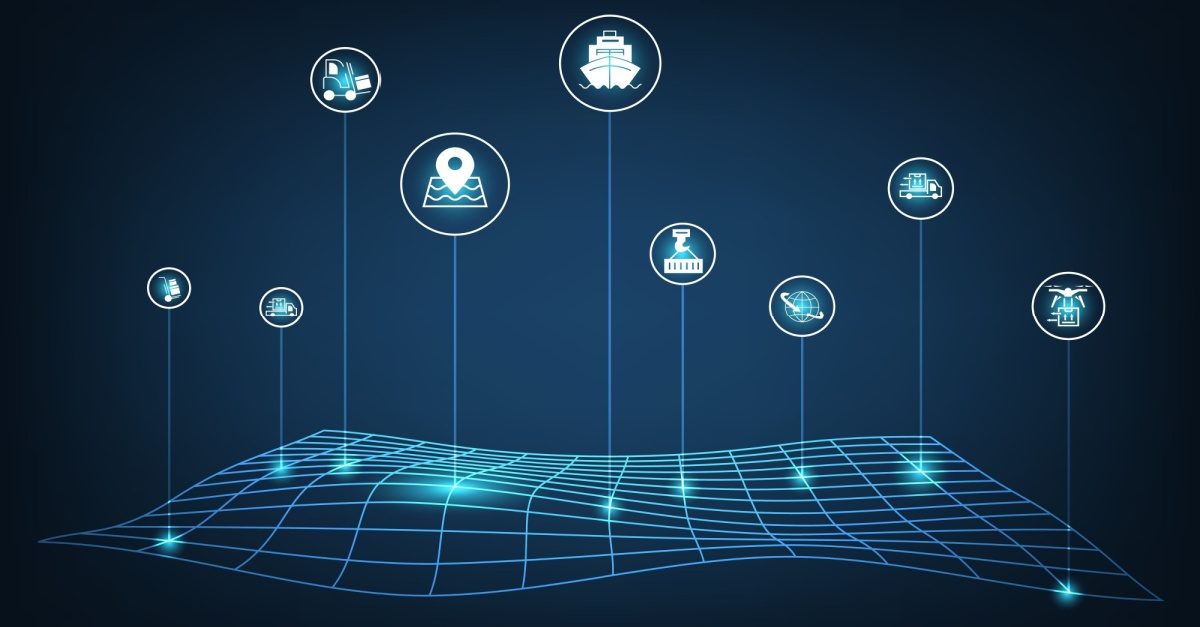
AI, IOT, AND ADVANCED ANALYTICS IN SUPPLY CHAIN INNOVATION
Much to the frustration of supply chain managers and leaders, there’s rarely a month goes by when either a supply chain upheaval happens or innovation upsets neatly arranged systems, or both. Recent years have shown that leaders can never rest comfortably astride their existing supply chain systems. They must always be alert for black swans, tariffs and trade wars, Greek AI-Gods bearing unexpected gifts and changes at the fundamental or technological level. 2025 is another year of supply chain innovation driven by artificial intelligence (AI), the Internet of Things (IoT) and advanced analytics creeping into business through SaaS tools and apps. These technologies continue to speed up the pace of change, boost supply chain operations, and lead to greater efficiency, transparency, and resilience if implemented correctly.
Real-world examples include Anhauser-Busch using supply chain innovation to double productivity, reduce time to market and cut unavailability of both in half. Many smaller firms also find success through AI, either through a systems overall or incremental progress with AI.
AI CONTINUES TO DRIVE SUPPLY CHAIN INNOVATION
If you have been ignoring AI until now, its ubiquity as a feature within supply chain systems means your business can’t ignore it any longer. Already a game-changer, AI supports and improves the thousands of daily processes and decisions across supply chain management.
AI’s ability to look for insights within vast amounts of data help optimise company operations, and guide strategic thinking. In 2025, AI is deeply embedded in all aspects of the supply chain, as identified by Gartner research. From demand sensing and forecasting to sales operations planning and execution, across inventory optimisation and management, to logistics, the value of AI is unavoidable.
Demand Forecasting and Planning: AI algorithms analyse historical sales data, market trends, and external factors such as economic indicators and weather patterns to accurately predict future demand. This allows companies to adjust their production schedules, manage inventory levels, and reduce stock outs or overstock situations. The result is a more responsive and agile supply chain that can adapt to changing market conditions.
Inventory Optimisation: AI-driven inventory management systems continuously monitor stock levels and use predictive analytics to determine optimal reorder points and volume. This minimises holding costs while ensuring that products are available when and where required. By reducing excess inventory and preventing shortages, companies can boost cash flow and customer satisfaction.
Logistics and Route Optimisation: AI-powered logistics platforms use real-time data from multiple sources, including traffic reports, weather forecasts, and fuel prices. They deliver optimised routes and schedules, reducing transport costs, delivery times and emissions. AI can also anticipate potential supply chain disruptions such as shipping problems and suggest alternative routes or suppliers to mitigate the impact.
IOT IN SUPPLY CHAIN INNOVATION
The Internet of Things (IoT) and its massive array of sensors and analytics tools support supply chains by providing real-time visibility across the network. IoT sensors like RFID tags, temperature sensors, GPS trackers and more transmit data across all aspects of the supply chain.
Real-time Tracking and Monitoring: IoT-enabled devices attached to parts, shipments and vehicles provide real-time tracking information, allowing companies to monitor their goods across the supply chain. This visibility helps identify risk of damage, delays and theft, to improve inventory accuracy.
Predictive Maintenance: IoT sensors in manufacturing equipment and vehicles continuously monitor their condition and performance, tracking that against historical and comparable live data. AI uses that data and smart algorithms to predict the early signs of a failure, providing alerts when maintenance is needed. This prevents unexpected breakdowns and reduces downtime, with scheduled maintenance less expensive than costly repairs or replacement.
Smart Warehousing: Warehouses have been smart for decades, but IoT technology boosts warehouse management through faster automation for inventory tracking, picking, and packing. Robots and drones can navigate warehouses, move items in bulk and deliver them on time to drive better operational efficiency, reducing labour costs, and minimising human error.
SUPPLY CHAIN ANALYTICS INNOVATION
Through the use of descriptive, predictive, and prescriptive analytics, companies are making smarter, faster data-driven decisions to optimise supply chain processes and align them with strategic business goals. Supply chain management (SCM) experts now rely on AI and analytics to deliver valuable insights.
Currently, most of these features require design knowledge and coding teams to learn (as with this Poloplast design forecast project), but as AI takes over, smart agents can access data and deliver results for any level or size of business.
Descriptive Analytics: By analysing historical data, descriptive analytics provides a comprehensive view of past performance, future trends, and market patterns. This data helps companies identify areas for supply chain improvement.
Predictive Analytics: Predictive analytics uses statistical models and machine learning algorithms to forecast future events and trends. This helps anticipate supply chain demand fluctuations, identify risks, and predict supplier performance, creating a resilient and flexible supply chain.
Prescriptive Analytics: Prescriptive analytics goes beyond mere prediction by recommending specific actions based on data analysis. Prescriptive analytics can refine optimal inventory levels, procurement strategies or production schedules. AI analytics can run endless “what if” scenarios to evaluate the impact of various decisions and choose the best course of action.
Temperature Control: For food and pharmaceutical suppliers, quality control is vital and the IoT can live track the temperature, humidity and other vital environmental data of raw stocks and finished goods, around the world. Commercial air quality monitoring and smart cooling systems play a part in keeping them fresh, with instant alerts saving potentially huge sums if there’s a cooling failure in the chain.
CONCLUSION
The ongoing convergence of AI, IoT and advanced analytics helps boost innovation in supply chain management at all levels. These technologies enable companies to modernise and create more efficient, transparent and resilient supply chains that will adapt to the ever-changing business environment.

